Tuning colors is a crucial process in digital painting and matte painting. The foundational elements are in place, but to achieve the desired intensity and vibrancy, effective techniques and tools are needed. In this guide, I will show you how to effectively enhance the colors of your image and add additional depth to the artwork.
Key Findings
- Adding highlights can make the image glow.
- Using different layers and blending modes enhances the effect.
- Accuracy and finesse in color choice are crucial for the overall result.
- The rule of thirds helps not only with image composition but also with targeted color placement.
Step-by-Step Guide
Step 1: Add Highlights
To brighten the image and make it glow, start by placing highlights at specific points. These subtle accents are particularly effective and should be used sparingly. Choose a new layer that you fill with a soft, light color to achieve the best results.
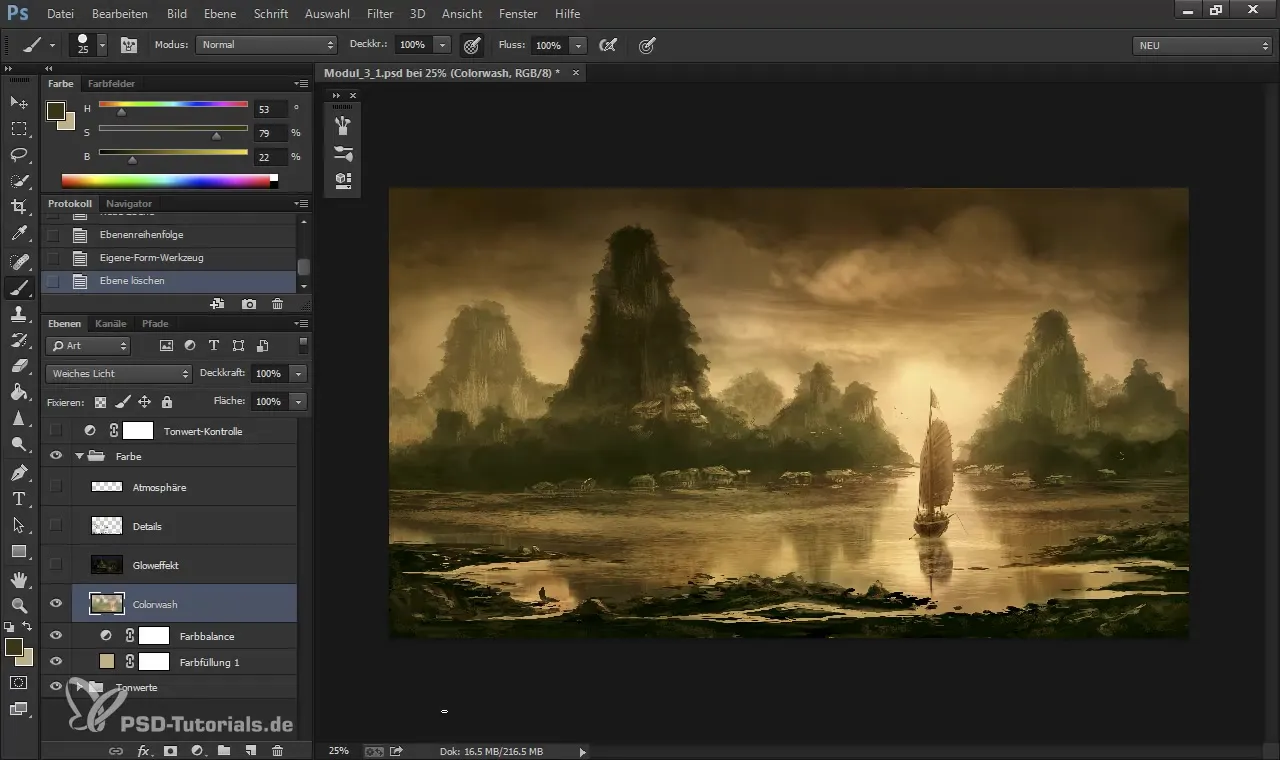
Step 2: Use Effective Blending Modes
Select the mode "Color Dodge" for the newly created layer. This technique allows you to influence the colors intentionally without losing the underlying details. Experiment with different blending modes like "Screen" or "Linear Dodge" to achieve the best effect for your image.
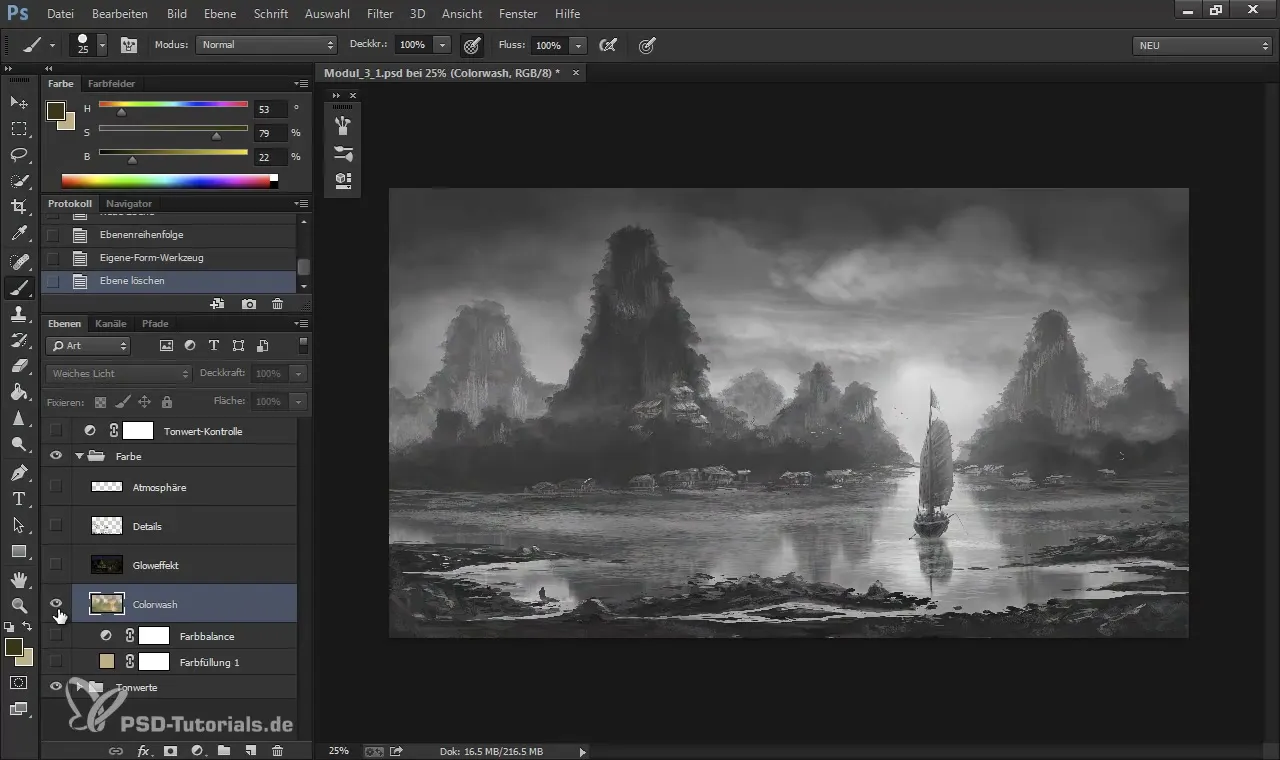
Step 3: Regulate Color Intensity
Testing is key. Start with a very low opacity of about 15-20% to see how the new color harmonizes with the existing image. A subtle approach often leads to the best results. You can choose a light, low-saturated color and apply it carefully to create a gentle glow.
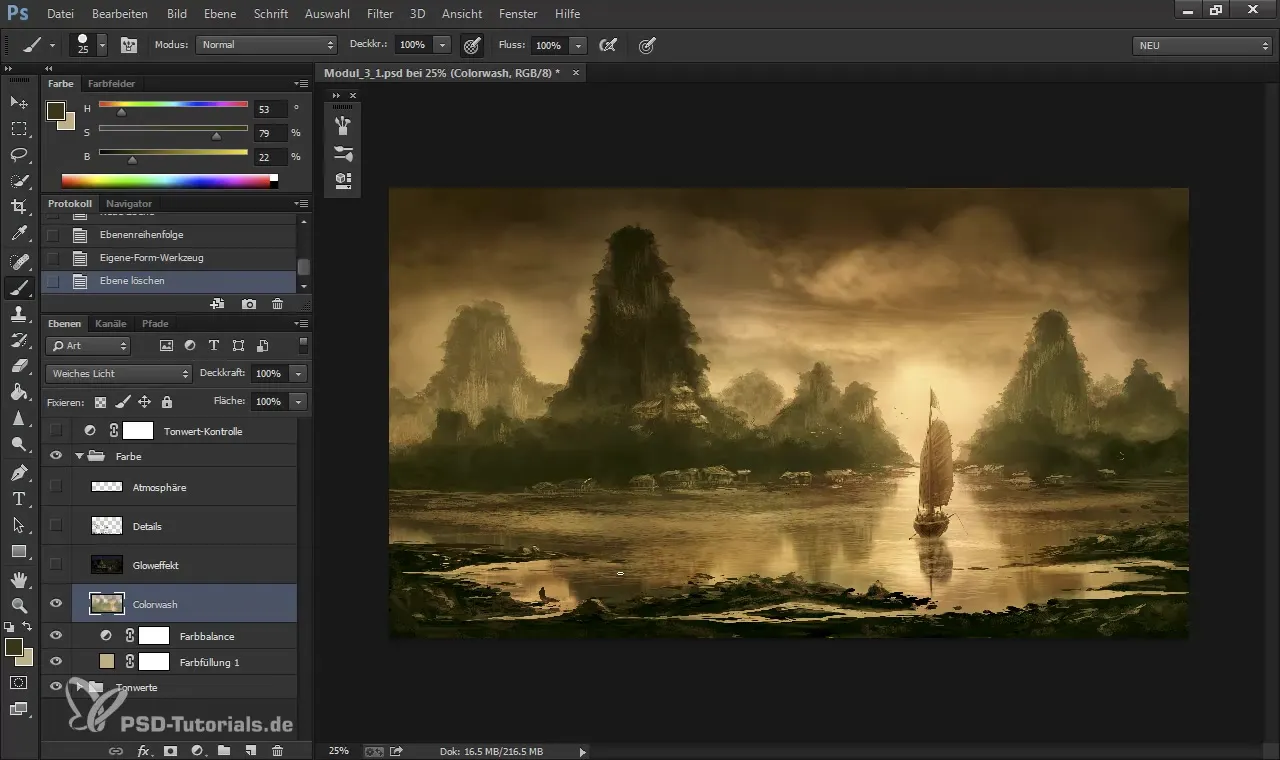
Step 4: Determine Light Sources
Think carefully about where you want to place the light sources in your image. You might want to particularly emphasize sunlight shining over water or light illuminating buildings. This strategic placement is crucial to creating the intended glowing effect.
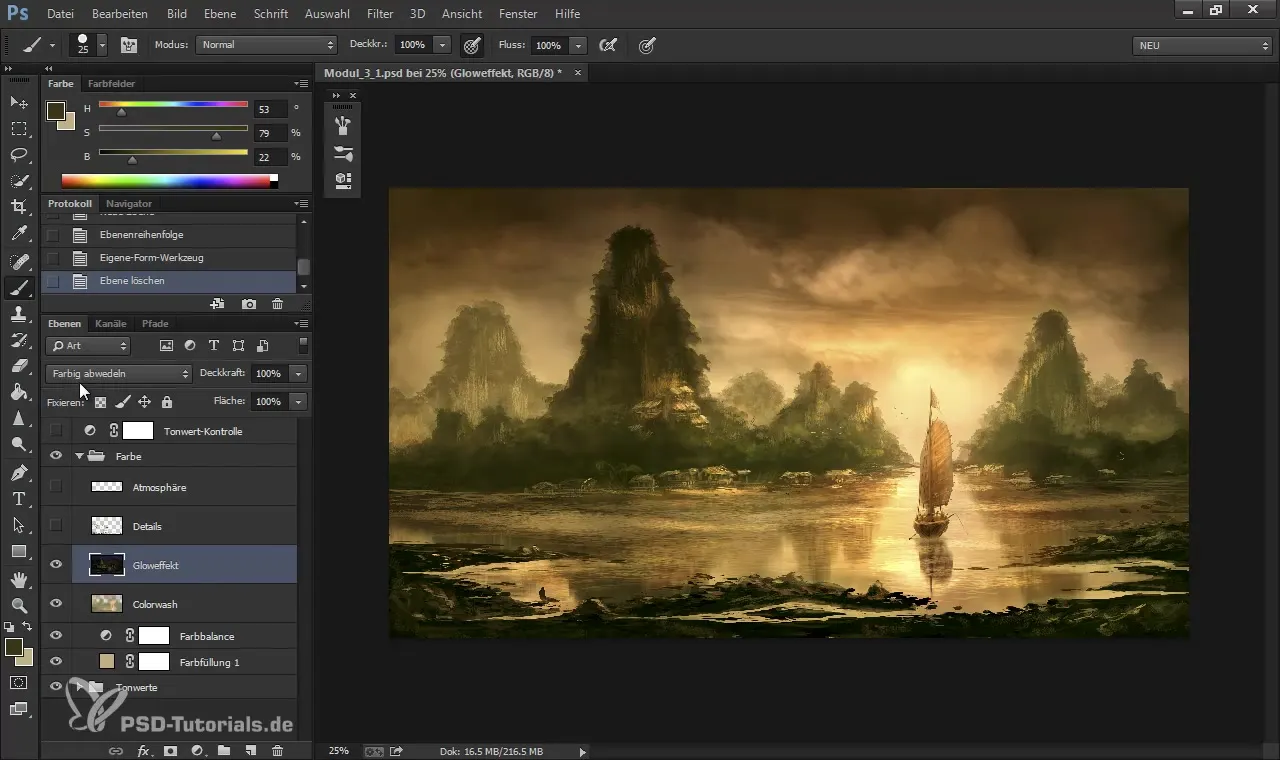
Step 5: Combine Color and Light
Use different color tones and layer them on top of each other to create contrasts. Whether you want to use golden tones for the sun or soft browns for the sand, make sure that the colors harmonize with each other and reflect the impression of light.
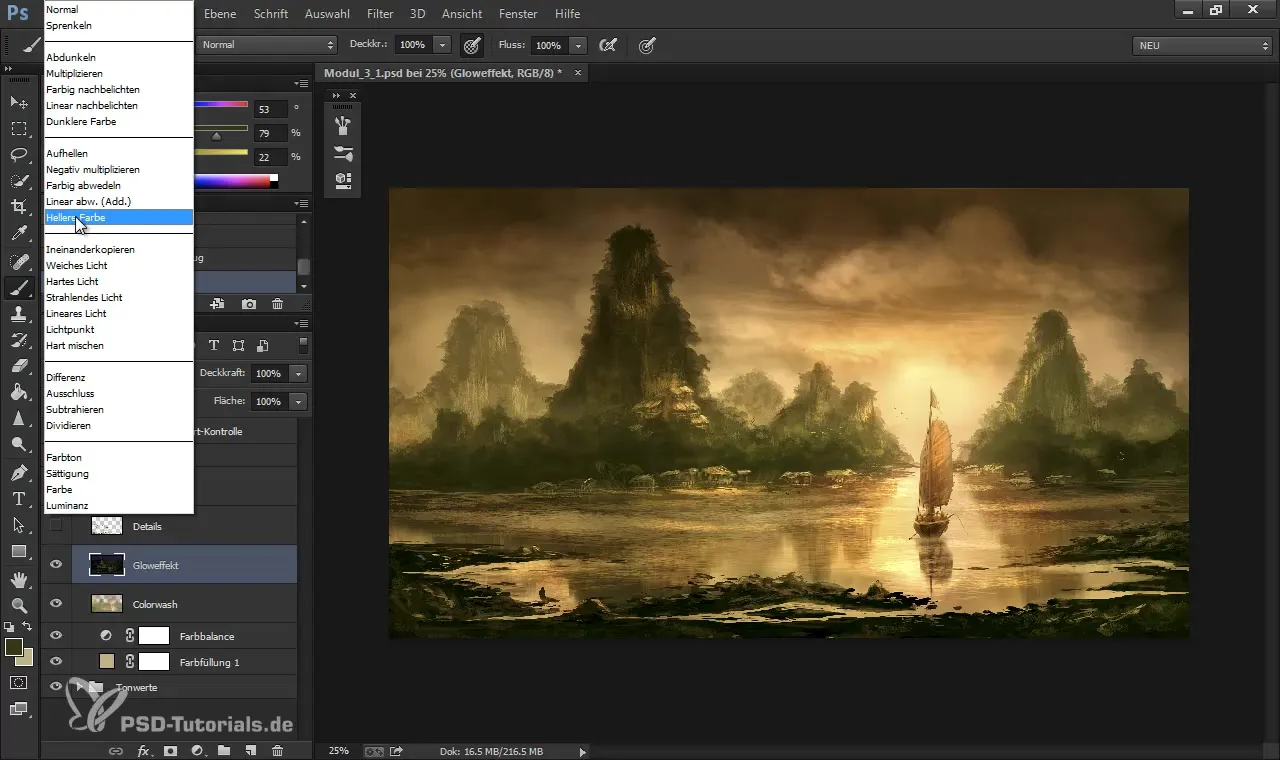
Step 6: Attention to Detail
Have you set the base colors and highlights? Now it's time to refine the details to give the images character and emphasis. Use a smaller brush for these finer tasks. This method will elevate your image composition to the next level.
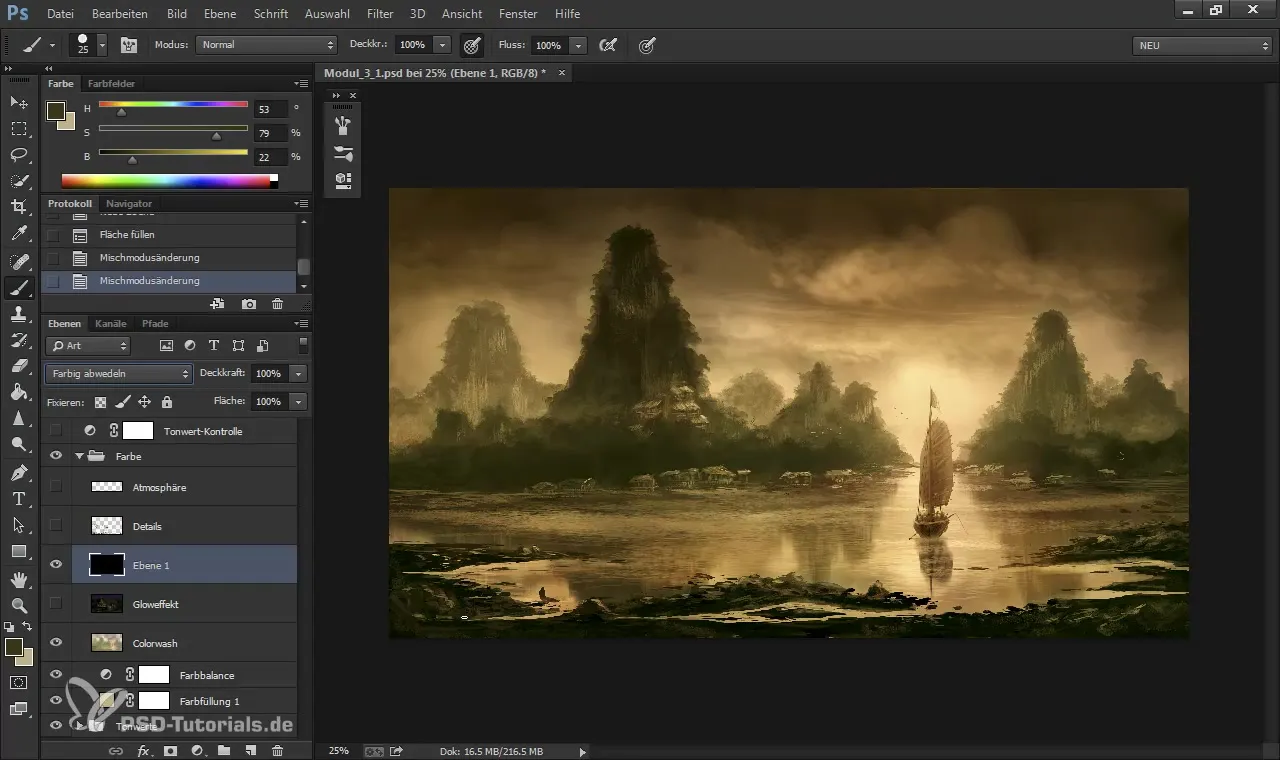
Step 7: Use of the Rule of Thirds
The rule of thirds is a proven principle in photography and painting to achieve a harmonious image composition. Place important elements like buildings or light sources along these third lines to create pleasing dynamics.
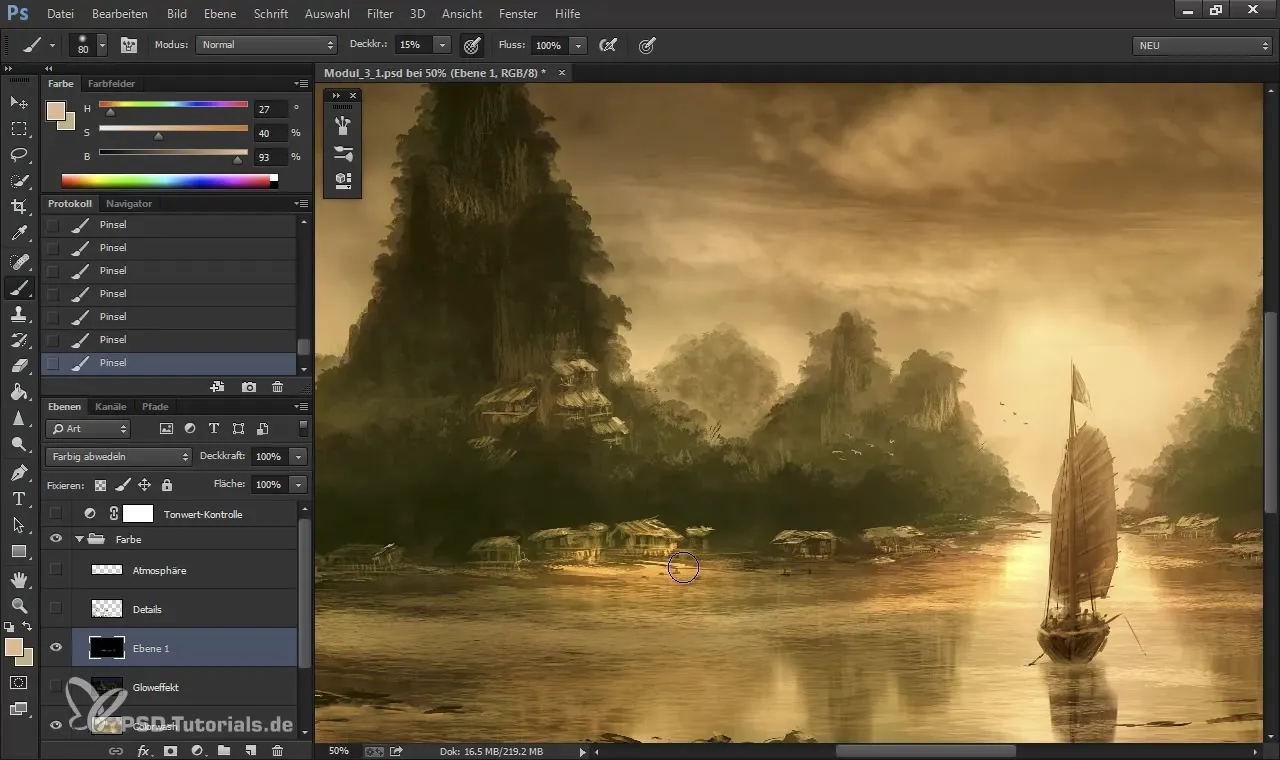
Step 8: Adjust Tonal Values
When you have your creations before you, check the tonal values. Adjust the color intensity to ensure that the colors do not appear overwhelming or disconnected. Experimentation is crucial here, going over it again to find the right adjustments.
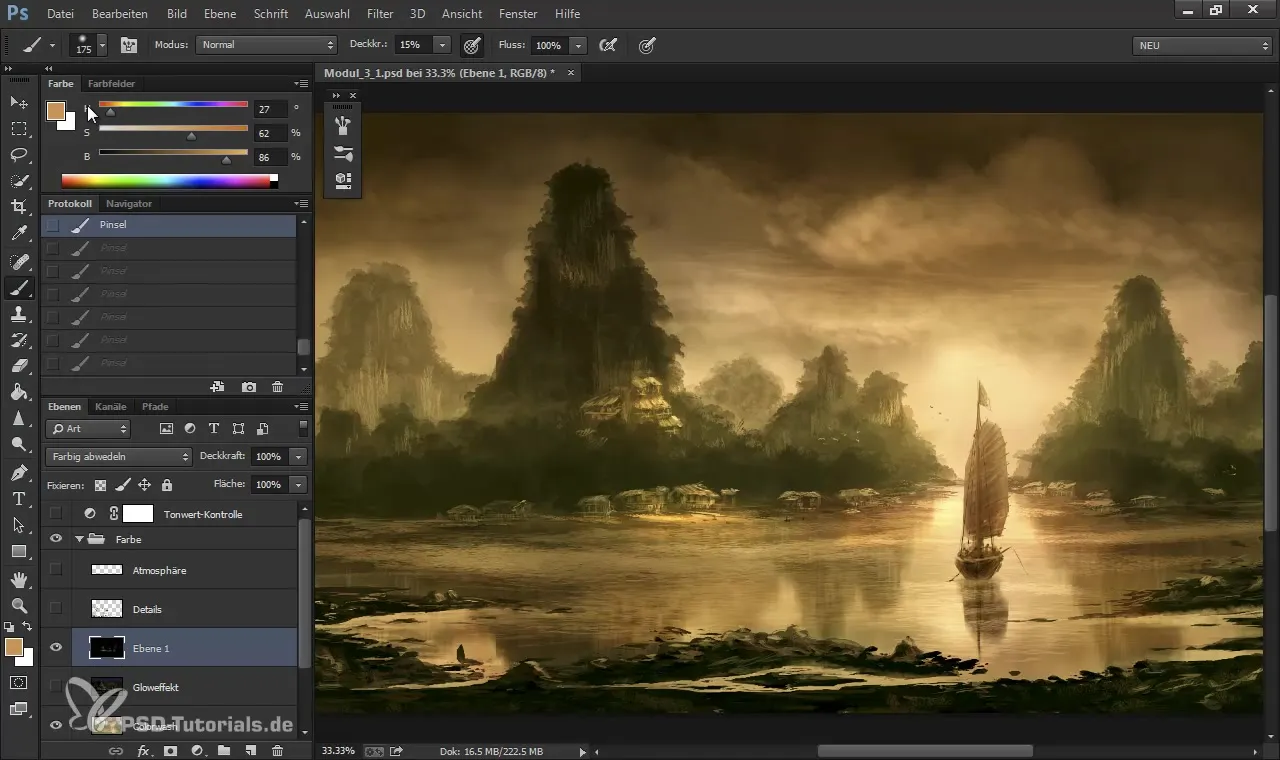
Step 9: Add Final Details
Once the main structure of colors and lights is set, add more small details that give the image vibrancy – perhaps some plants or decorated structures that are visible from a distance. These elements contribute to the overall composition and make the image more appealing.
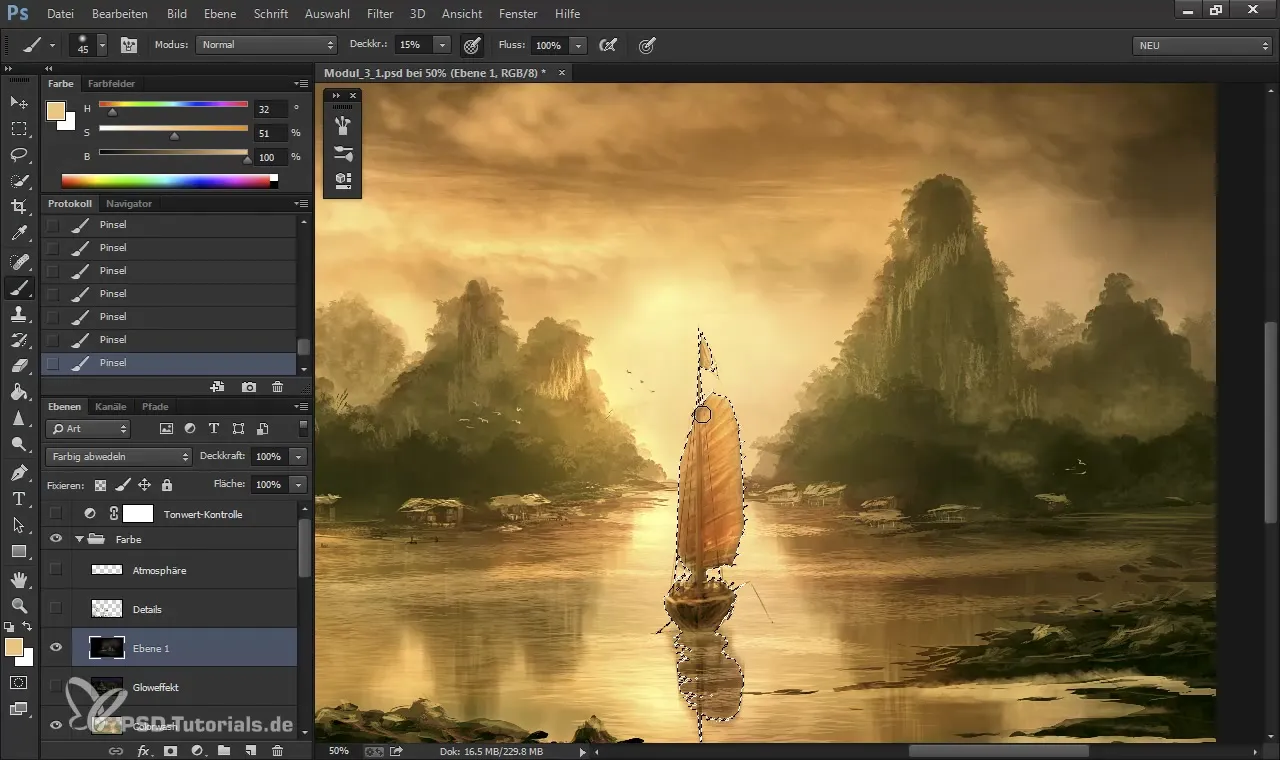
Step 10: Review the Image Before Finalizing
Before declaring the image final, do a last check. See if the details are well placed and if the colors appear harmonious. Ensure that the image looks appealing from both close up and from a distance.
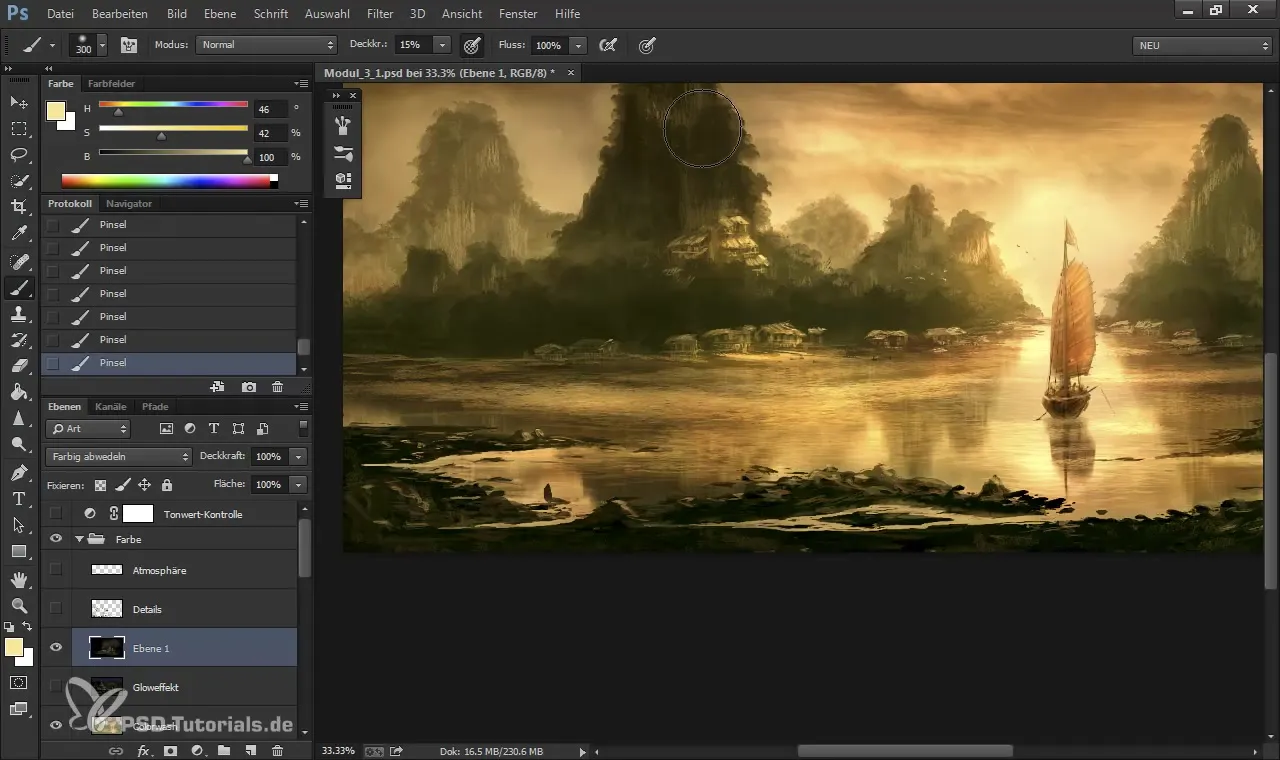
Summary – Digital Painting & Matte Painting: Working with Colors
Working with colors in digital painting is a creative challenge that must be approached with precision and sensitivity. A well thought-out process, from setting highlights to using effective blending modes to applying the rule of thirds, leads to an impressive final result.
Frequently Asked Questions
How do I find the best light sources for my image?Consider the composition and think about where the light is coming from. Test different areas.
What are the best blending modes for color changes?"Color Dodge" is often the most suitable mode. Also experiment with "Screen" or "Linear Dodge".
How can I ensure that my colors appear harmonious?Make sure to choose colors that complement each other. Use the color palette to achieve cohesive harmony.
Is the rule of thirds always necessary?No, it is a guideline that can help you, but ultimately the composition depends on your personal style.


